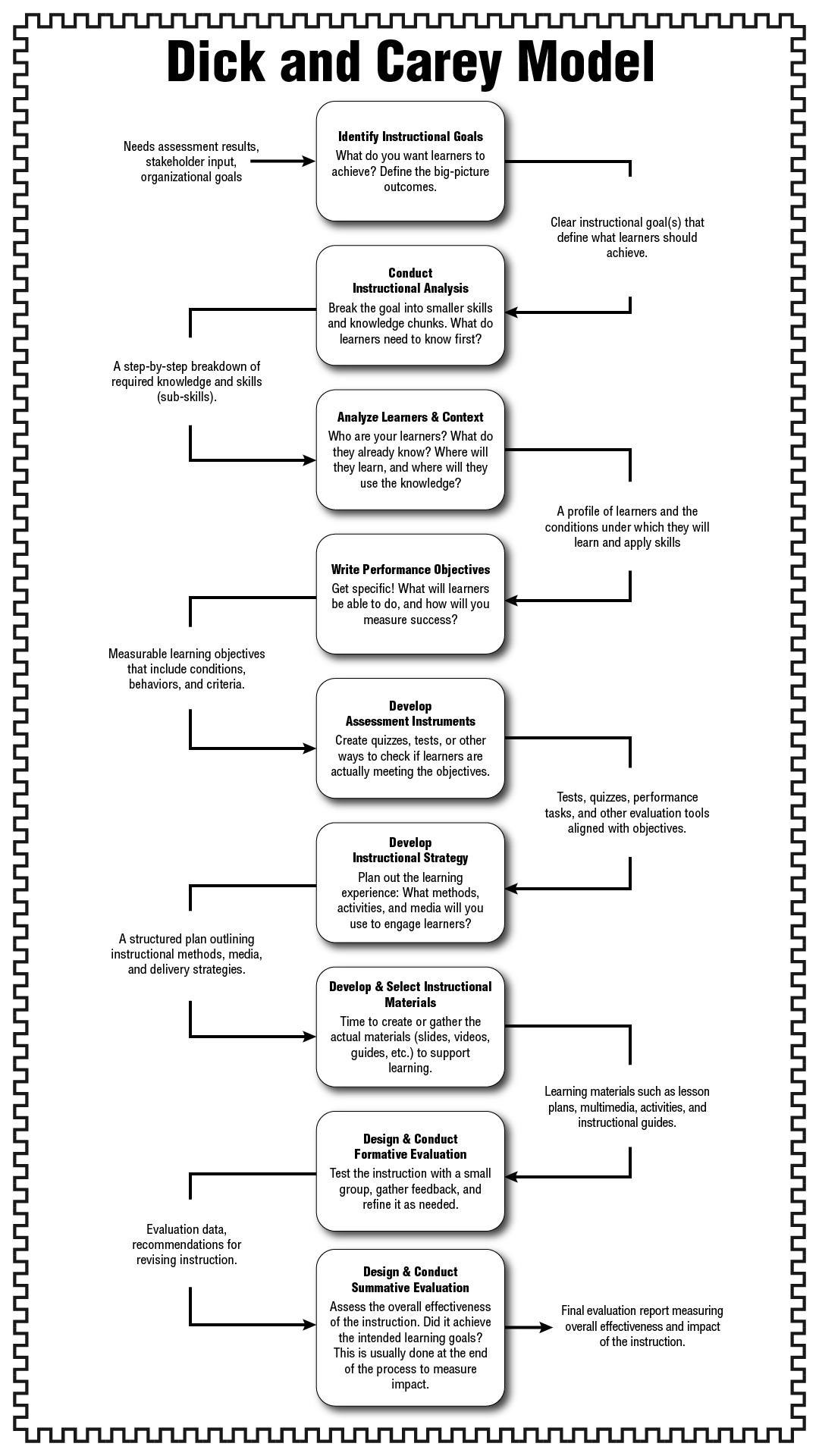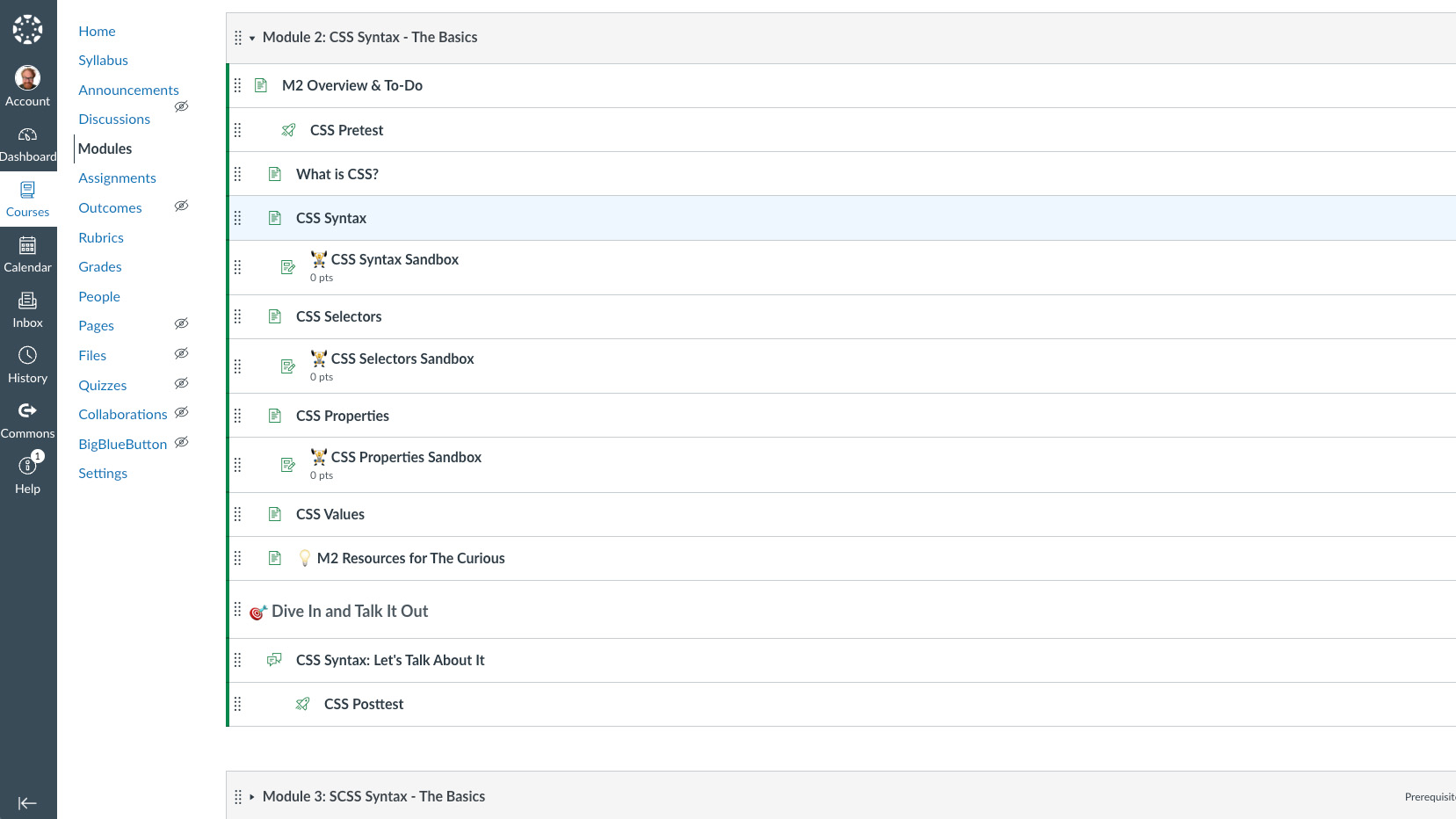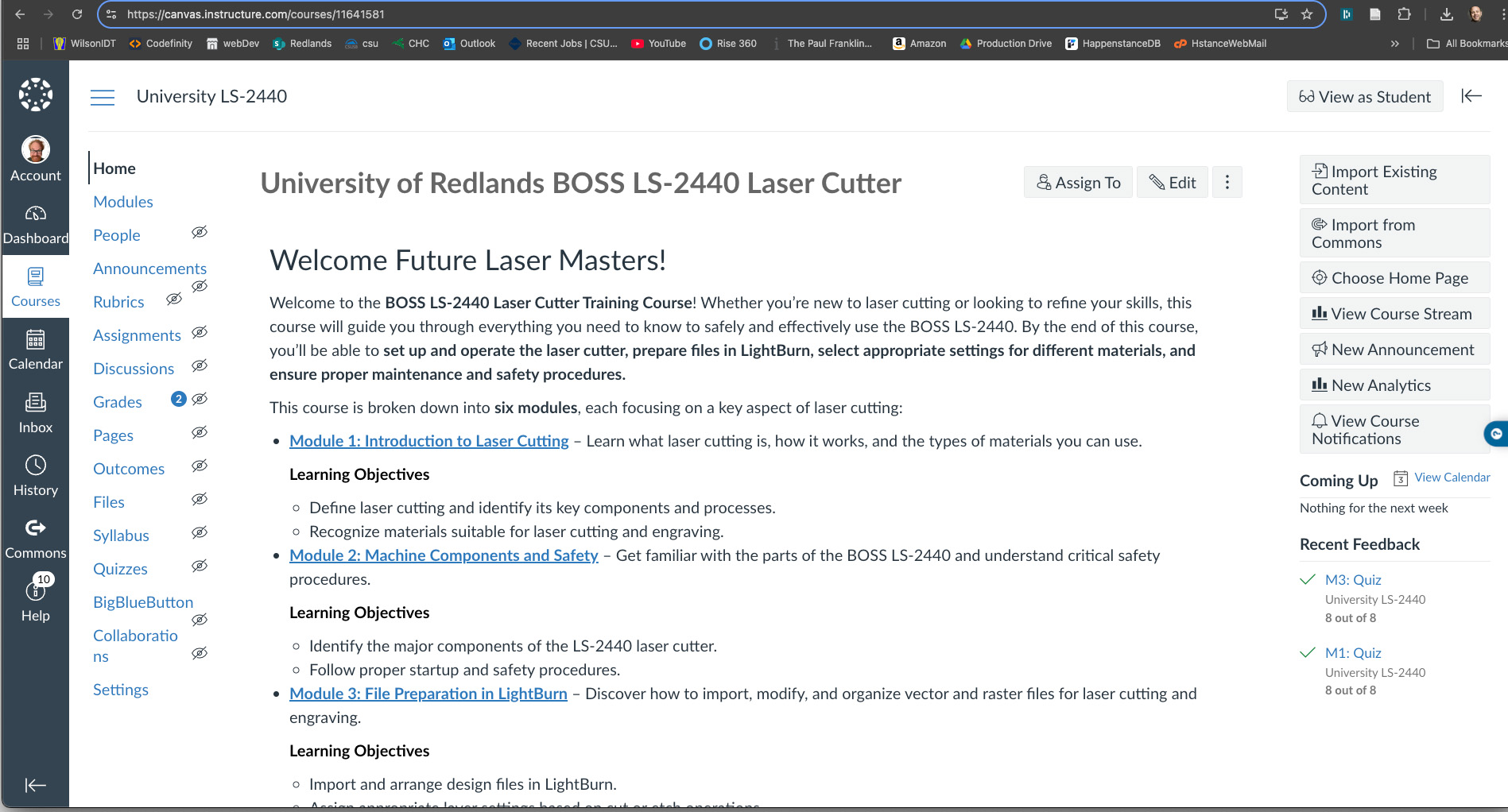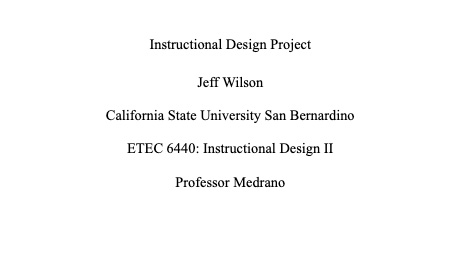Instructional Design
Instructional Design is a field of study based on research and learning theories which aims to create, implement, and evaluate learning experiences, techniques, and modalities which are effective and accessible to a target audience. Instructional Designers work with the stakeholders in a learning or teaching endeavor to analyze what needs to be learned, how best to deliver that learning, and assess and evaluate if the learning was successful. Instructional Designers need to be aware of and comfortable with technologies that can be used in to increase learning efficacy.
My elevator pitch definition of Instructional Design is: Instructional Design is a field that leverages research-driven learning theories to iteratively design and refine learning experiences that can be delivered in-person or online. We are also trained to conduct research and evaluate these designs ensuring that they are effective.
Piskurich, G. M. (2015). Rapid instructional design: Learning ID fast and right (3rd ed.). Wiley.
Instructional Design Models
The ADDIE Model
The ADDIE model is like a step-by-step recipe for creating a good learning experience. It has five key steps:
- Analysis: You figure out what the learners need to know and what skills they need.
- Design: You plan how to teach them, like picking activities, lessons, and materials.
- Development: You create the learning materials, such as slides, videos, or quizzes.
- Implementation: You deliver the lesson to learners, like teaching it in a classroom or sharing it online.
- Evaluation: You check if the learning worked by getting feedback or testing the learners.
ADDIE is a simple and flexible way to plan, create, and improve lessons.
Dousay, T. A., Stefaniak, J. E., & Branch, R. M. (n.d.). Characteristics and evolution of foundational instructional design models. In R. A. Reiser, A. A. Carr-Chellman, & J. V. Dempsey (Eds.), Trends and issues in instructional design and technology (4th ed., pp. 41–XX). Taylor & Francis. https://doi.org/10.4324/9781003502302-5
The Dick and Carey Model
The Dick and Carey model is a little more detailed and focuses on making sure every part of the lesson works well together. Here are its key steps:
- Identify Instructional Goals: Determine what learners should know or be able to do at the end of instruction.
- Conduct Instructional Analysis: Analyze the steps learners need to follow to achieve the goals and identify the required knowledge and skills.
- Identify Entry Behaviors and Learner Characteristics: Assess the learners' prior knowledge, skills, attitudes, and other traits.
- Write Performance Objectives: Develop specific and measurable objectives for the instruction.
- Develop Assessment Instruments: Create tools to measure learners' achievement of the objectives.
- Develop an Instructional Strategy: Outline the teaching and learning activities to help learners meet the objectives.
- Develop and Select Instructional Materials: Create or choose the materials needed to support the instructional strategy.
- Revise Instruction: Use feedback from the formative evaluation to improve the instruction.
- Design and Conduct Formative Evaluation and Revise Instruction: Test the instruction with a small group to identify areas for improvement. Modify the instruction based on the results of the formative evaluation
- Design and Conduct Summative Evaluation: Evaluate the effectiveness of the instruction in achieving the goals with a larger audience.
World of Work. (2019, August). Dick and Carey instructional design model. Retrieved from https://worldofwork.io/2019/08/dick-carey-instructional-design-model/
Design Examples
This video is a walkthrough of Module 8 in Multimedia Foundations. My students affirmed that having a video walkthrough for each module was extremely helpful for our asynchronous online course, so I created one for every module.
Reflection
In ETEC 5440 under the tutelage of Professor Medrano, my group created a robust module to teach other instructional designers about the technology of Cascading Style Sheets as part of a larger course on updating the look and feel of a moodlecloud course. I was extremely engaged with the group and I learned and retained more from the group project than I did from individual projects I've undertaken during this Master's program.
Currently, my preferred role in instructional design is the actual creation of the learning assets. I've been a designer, typesetter, and production artist for my entire adult life, so getting things designed and built is second-nature to me. I'm still learning the theoretical underpinnings of our work as instructional designers, but working with my teammates on the design allowed me to lean on them for the feedback about theoretical alignment while I built assests and refined them with their help.
Becoming an instructional designer is changing my personal paradigm to view other fields and technologies that I'm familiar with in the context of ID. I'm realizing that practices from other realms like project management and marketing are germane to instructional design. For example, the principles explained in the Four Disciplines of Execution (4DX) have a lot to do with harnessing motivation of individuals and teams to achieve goals.
Creating learning deliveries the ADDIE model was very helpful to my understanding of the process. I'm going to spend some time going back over learning deliveries that I created before learning to evaluate the outcomes and align the assessments and activities with the course objectives and the student learning outcomes. As a life-long designer, one is never done.
In ETEC 6440 again under the tutelage of Professor Medrano, I created an asynchronous Canvas course job aid to train University of Redlands students to use the Art department's BOSS LS-2440 Laser Cutter. I was tasked with using the Dick and Carey model of instructional design to create this job aid. You can see the results above and the documentation of the entire process in my report. By using both ADDIE and Dick and Carey methods of designing these courses, I learned that the two models have a lot in common and that the throughline is to be systematic and iterative through out all of the phases of development.
Having a solid foundation in learning theory, keeping in mind accessibility and UDL, and iterative testing and revision are my main takeaways from both of my design courses in this program. I really enjoy learning new technologies and building things, but I can analyze, design, and evaluate learning experiences as well.



